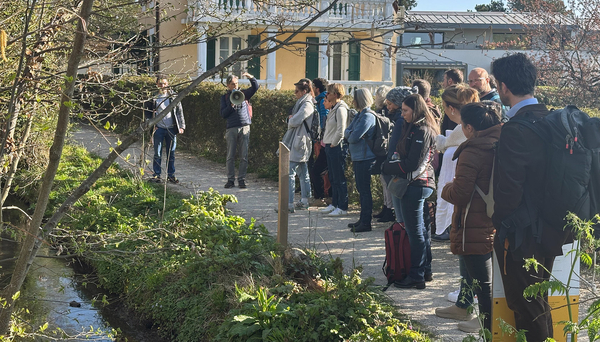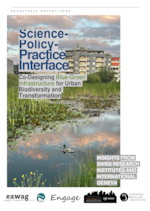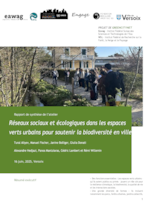News Detail
The cities of the future are blue-green
July 3, 2025
Growing cities around the world are putting biodiversity under pressure. At the same time, new research shows that urban areas can be part of the solution. But how should cities be planned and designed so that they promote biodiversity, are resilient to the consequences of the climate crisis and offer the population inclusive meeting spaces? These questions were at the centre of a round table in Geneva and a workshop in Versoix, both of which took place in spring 2025. In Geneva, the focus was on an exchange with representatives of international organisations, while in Versoix it was primarily experts from the cantons and municipalities who were invited.
The two events were organised by the aquatic research institute Eawag and the Federal Research Institute WSL as part of the GreenCityNet and BlueGreenNet projects in collaboration with Engage, the joint initiative of the ETH Domain, with the support of the Geneva UN Charter Centre for Excellence of the University of Geneva and the Fondation Braillard Architectes.
Networks across all system boundaries
The key realisation: a willingness to rethink the coexistence of people and nature in urban spaces is needed. “Above all, we need to emphasise the mutual benefits,” says Tural Aliyev, urban planner and sociologist, currently a postdoctoral researcher at Eawag and an associate researcher at the University of Geneva. “Bringing nature back into cities has many benefits. It promotes people’s health, creates spaces for education and social exchange, mitigates the consequences of heavy rainfall and heatwaves and, last but not least, provides habitats for animals and plants.”
One promising approach is the expansion of blue-green infrastructures such as ponds, parks, green roofs and façades, urban forests and near-natural streams. At the same time, there needs to be a rethink in planning and cooperation – across three different types of system boundaries:
- Interdisciplinary: between social and environmental sciences
- Transdisciplinary: through close dialogue between research, policy and practice
- Cross-ecosystem: through integrated management of water and green spaces in urban areas
The results of the round table are now being incorporated into the further work of the GreenCityNet project. The aim is to promote cooperation and knowledge transfer, develop practical solutions and support urban planners and decision-makers worldwide in successfully planning and implementing sustainable strategies.
Publications
Cover picture: Excursion during the workshop on urban development and biodiversity with experts from cantons and municipalities. (Photo: Tural Aliyev)



